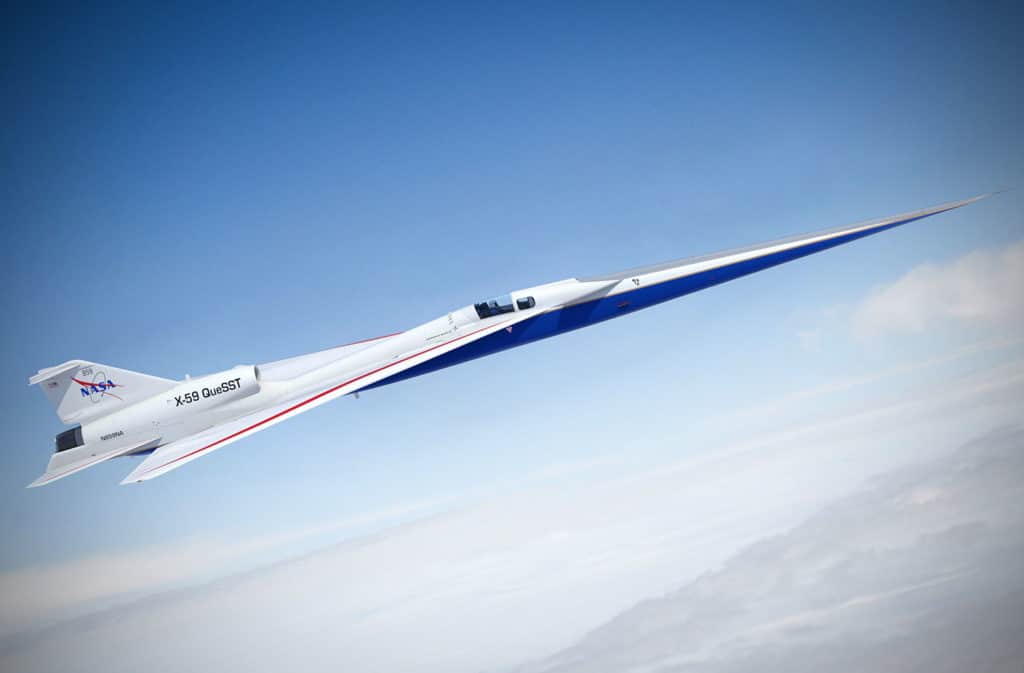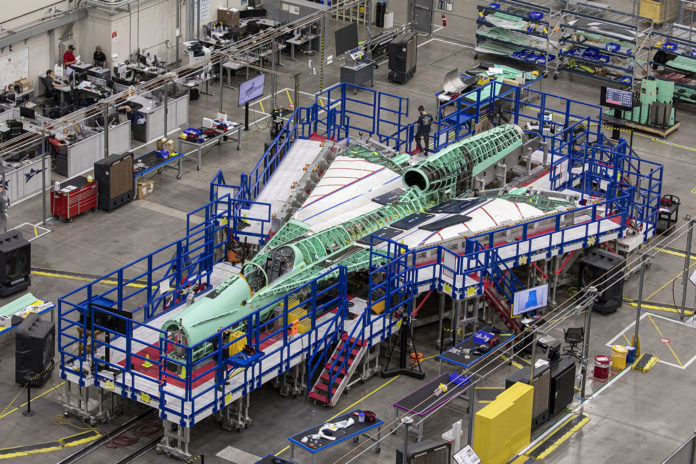In December 2019, NASA showed us for the first time the particular design of its X-59 Quiet SuperSonic Technology (QueSST) aircraft, its next supersonic plane. This aircraft stands out for the use of an extremely long nose, specifically designed to produce a quieter noise to people below. Now, a year and a half later, we can see the incredible supersonic aircraft dubbed the ‘son of Concorde’ is taking shape as it gears up for its first test flight next year.
The space agency shared a time-lapse video of the construction for the craft, which is taking place at Lockheed Martin Skunk Works in Palmdale, California. The supersonic aircraft is designed for cruising at Mach 1.4 – which is 925mph and faster than the speed of sound (767mph). Also, its sonic boom is expected to sound no louder than the thump of a car door closing at ground level, which means the jet can fly without producing a startling boom for people below.
The short 43-second clip shows the development of the fuselage that houses the cockpit and the 29.5-foot-wide wing that holds the fuel systems and parts of the control systems. And at the end, you can see the tail assembly coming together. Before any flights can take place, Lockheed engineers and technicians are working on merging the major aircraft sections together, making it look like an actual aircraft for the first time since construction began in 2018.

“We’ve now transitioned from being a bunch of separate parts sitting around on different parts of the production floor to an airplane,” said Jay Brandon, NASA chief engineer for the Low Boom Flight Demonstrator (LBFD) project.
The supersonic aircraft is being put together using features on the structure that allow engineers to precisely self-locate the aircraft’s wing, tail assembly, and fuselage or forward section, then employed a series of laser projections to verify the precise fit.
“The extensive use of features and pre-drilled, full-size fastener holes has significantly reduced the time it takes to locate and fit parts, especially mating large assemblies like this,” said David Richardson, Lockheed Martin program director. “It is sort of like how Legos go together. We used the laser tracker to make sure it is all aligned per the engineering specs before we permanently bolted it all together.“
NASA awarded Lockheed Martin a $247.5 million contract to build the X-59, which is set to finish development this year and begin test flights in 2022. Once fully constructed, the X-59 is expected to be 94 feet long with a wingspan of 29.5 feet for a max takeoff weight of 32,300 lb (14,700 kg). It should reach Mach 1.5 (990 mph) and cruise at Mach 1.4 (940 mph) at 55,000 ft (16,800 m).
The aircraft’s fuselage contains the cockpit and helps define the shape of the X-59. Eventually, the 30-foot-long nose of the aircraft will be mounted to the fuselage. The cockpit will contain the forward-facing ‘window’ the eXternal Vision System (XVS), which consists of two cameras mounted above and below the X-59’s nose.
If successful, Nasa’s design could be rolled out for commercial flights – or possibly even the US military. Though the single-piloted X-59 will never carry passengers, aircraft manufacturers may choose to incorporate its technology into their own designs.
